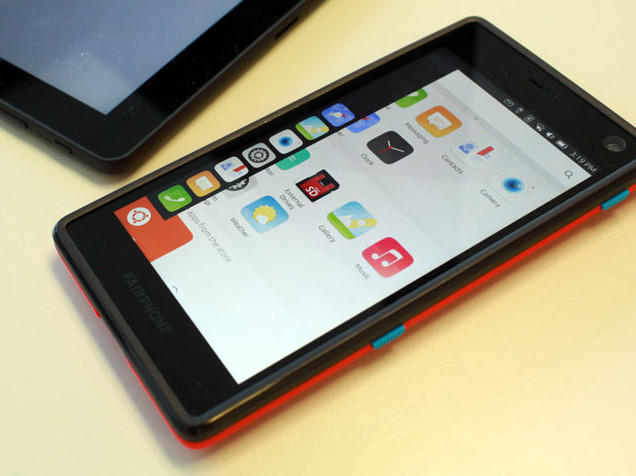Fairphone aims to “create positive social and environmental impact from the beginning to the end of a phone’s life cycle”by designing easy to repair and long lasting phones that can be recycled and reused, and manufactured in good working conditions using conflicts-free materials. Their latest model is the Fairphone 2 5” Android 5.1 smartphone with a Qualcomm Snapdragon 801 processor, but you can now install Ubuntu on the device as UBports Ubuntu community has released a port for the phone.
 Let’s go through Fairphone 2 hardware specifications first:
Let’s go through Fairphone 2 hardware specifications first:
- SoC- Qualcomm Snapdragon 801 (MSM8974AB) quad core Krait 400 processor @ up to 2.26 GHz with Adreno 330 GPU
- System Memory – 2 GB LPDDR3
- Storage – 32GB eMMC flash + micro SD slot with support for SDHC, SDXC, UHS cards
- Display – 5″ Full HD (1920 x 1080) LCD TFT IPS touchscreen display with Gorilla Glass 3
- Cellular Connectivity
- 2x micro SIM (3FF) Dual-SIM, Dual-Standby (DSDS); Not shared with micro SD slot
- GSM/GPRS/EDGE Quad-band: 850, 900, 1800, 1900 MHz
- WCDMA Bands 1 (2100 MHz), 2 (1900 MHz), 8 (900 MHz)
- 3G Max Downlink Speed Cat. 24 – 42.2 Mbps
- 3G Max Uplink Speed Cat. 6 – 5.76 Mbps (Cat. 7 capable)
- LTE Bands 3 (1800 MHz), 7 (2600 MHz), 20 (800 MHz)
- 4G Max Downlink Speed Cat. 4 – 150 Mbps
- 4G Max Uplink Speed Cat. 4 – 50 Mbps
- Wireless Connectivity – Dual band 802.11 b/g/n/ac WiFi up to 433 Mpbs, Bluetooth 4.0 LE, GPS with A-GPS, Glonass, FM radio
- Camera – 8MP rear camera with flash, 2MP front-facing camera
- Audio – Rear facing speaker, 3.5mm headset jack, dual microphones
- USB – 1x micro USB OTG port
- Sensors – Ambient Light, Proximity, 3-axis Compass, 3D Accelerometer, 3D Gyroscope
- Misc – Vibration Motor with Haptics Feedback; Power, Volume & Camera buttons; 3 color LED
- Expansion – Backside expansion port for external case with USB 2.0 device interface and power input
- Battery – Removable 2,420 mAh battery
- Dimensions & Weight – N/A
You’ll also be able to buy spare parts in case you need to repair the phone with the display, camera, battery, core, top and bottom modules sold separately if you need a replacement. Fairphone 2 sells with Android 5.1 exclusively, so if you want to run Ubuntu Touch LTS, you’ll need to install it yourself with Magic Device tool. The installation procedure looks very easy as shown in the video below.
If you are interested you can pre-order a Fairphone 2 for about 524 Euros including 21% VAT.
Via Ubuntu Insights

Jean-Luc started CNX Software in 2010 as a part-time endeavor, before quitting his job as a software engineering manager, and starting to write daily news, and reviews full time later in 2011.
Support CNX Software! Donate via cryptocurrencies, become a Patron on Patreon, or purchase goods on Amazon or Aliexpress




